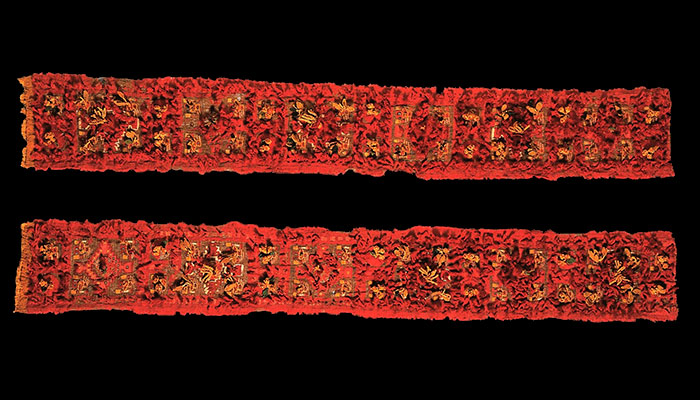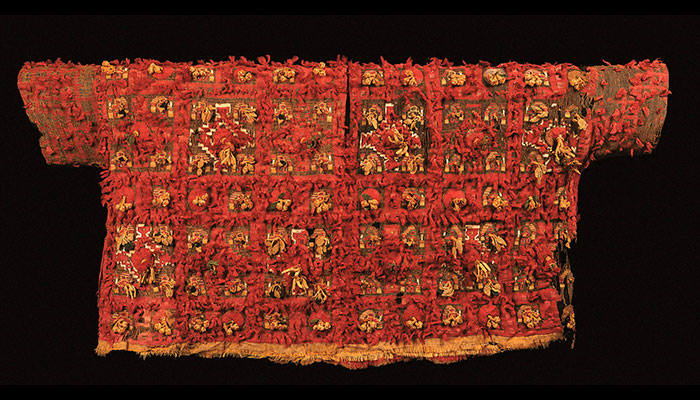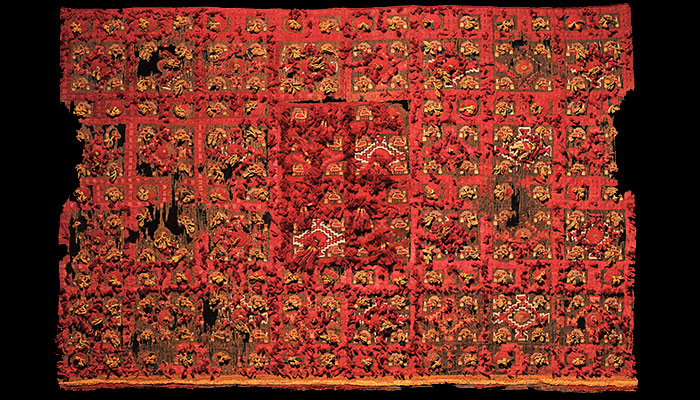Chimu, Labyrinths of a sacred costume
The ceremonial costume
The turban is a long and simple rectangular piece of cloth that ends in two panels with decorative designs. The cloth was wrapped around the head to form a bulky turban, or, possibly used as the base for another more complex headdress worn over it, such as a feather piece in the form of a half moon, characteristic of the Chimú attire. In both cases, the decorative panels fall across the wearer’s torso or over his back, simulating long hair.
The sleeved tunic, with its wide, short shape and light appearance, is characteristic of coastal dress, which differed from that of the mountains, where they used a thicker textile, without sleeves, that reached the knees. The tunic’s entire surface is covered with the same designs found on the turban.
The breechcloth is a long, thin rectangular piece of cloth, similar to the turban. At one end, the weavers sewed a large panel decorated with the same techniques and iconographic compositions employed in the other two garments. This cloth acted as an undergarment, doubling itself between the legs of the wearer, with the decorated panel placed in the front, as if it were a one-sided short skirt.








































